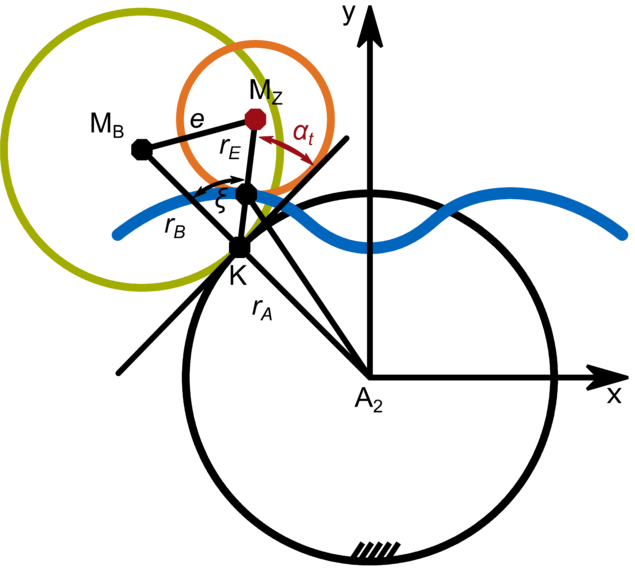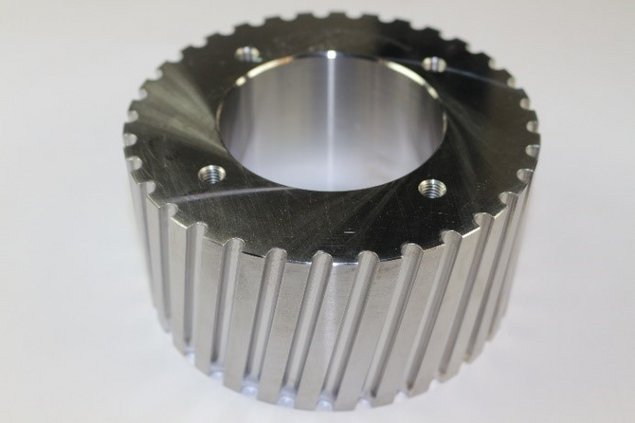Research Topic
| Short Title | Eccentric Cycloid Gearing |
| Start of Project | Q1/2019 |
| Funding | FVA-Nr. 864/I, IGF-Nr. 20549 N/2 Federal Ministry for Economic Affairs and Climate Action, BMWK |
| Contact | Dr.-Ing. M. Otto |
Project Description
In the research project, a parameter-based geometry description of the eccentric cycloid gearing was developed. The analytical description of the flank and root geometry of the arc and cycloid gear is studied in detail. The description with backlash used here was developed for an EC gearing which satisfies the law of gearing at all points of contact. The clearance was applied to the area between the tooth tip and root as well as between the meshing areas of the flanks. The geometry description was designed in such a way that a largely independent implementation of the left and right flanks is possible. Concluding the analysis of the geometry, a complete set of necessary parameters for the description of the EC gearing was identified.
The developed flank geometry of the EC gearing was used to derive practical characteristics for various gearing properties of the gear pair. The parameters considered are the geometry of the path of contact, the transverse pressure angle, the radius of curvature, the sliding velocity, the contact ratio and the contact line length. To classify the geometry and evaluate the characteristics of the EC gearings, comparisons were made with gearings and gears already described in the literature. The compared gearings and gears were classified according to certain criteria. For further use of the EC gearing, solid models were generated using the converter program according to FVA 604/II. The models generated in this way were examined exemplarily in an FE contact calculation. Overall, the applicability of the geometry description of the EC gearing could thus be demonstrated.
In the research project, the development of a design strategy was considered with regard to various aspects. The parameter-based geometry description and the characteristic values derived from it were used to pre-dimension the macro geometry. The following steps were implemented:
1. Consider boundary conditions
2. Define general parameters
3. Set parameters for the arc gear
4. Adjust geometry of pinion and gear
5. Check load-free characteristic values of the design calculation
The rotational transmission behavior of the EC gearing was validated on the dynamic test rig of the FZG with a center distance of 140 mm. The gearing manufactured for this purpose was developed using the methods developed in the research project. The load-free characteristics of the gearing used were analyzed on the basis of various parameters. The tested gearing showed a high manufacturing accuracy of both gears. The measurement results of the dynamic test rig demonstrated the overall running and functional capability of the EC gearing.

